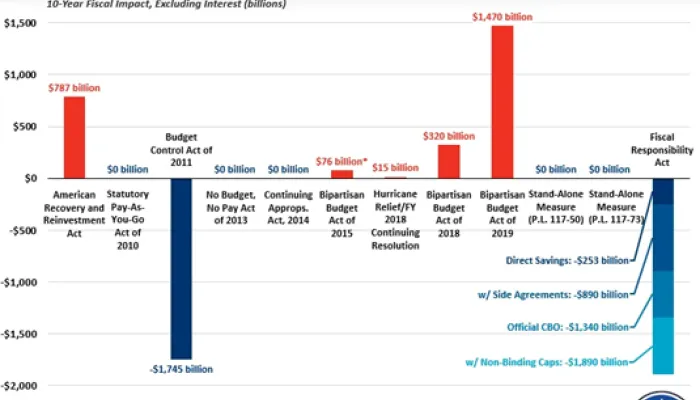House and Senate Move Forward on FY 2018 Appropriations
The appropriations season is moving forward before Congress has passed a budget. Below, we explain how that can happen.
Typically, Congress is supposed to pass a budget before beginning the approprations process. April 15 is the annual statutory deadline for passing a conferenced budget resolution in the House and Senate.
The budget resolution is intended to impose discipline on the appropriations process by providing a topline number for discretionary appropriations known as a 302(a) allocation, which is the total amount that the Appropriations Committees can spend. Once the 302(a) allocation is set through the budget resolution, the Appropriations Committees divide the topline amount into 302(b) allocations for each of the twelve appropriations subcommittees.
Without a budget resolution, there is no official 302(a) allocation setting the total amount for the Appropriations Committees to spend and consequently no overall limit within which the Committee can establish 302(b) allocations to divide the topline spending among their twelve subcommittees. However, there is a point of order against appropriations that exceed the statutory discretionary spending caps ($1.065 trillion for FY 2018) applied to the appropriations bill that caused the excess – typically the last appropriations bill considered by the House.
Learn more about appropriations with our explainer Appropriations 101.
Although the Budget Act prohibits considering tax or spending legislation before adopting a budget resolution, there are ways around it. House rules allow that chamber to begin considering appropriations bills after May 15 without a budget resolution. While the House failed to pass a budget before August recess, and it appears appropriators are moving forward with a topline spending level that is consistent with what the House Budget Committee proposed. These levels are $72 billion above current law for defense and $5 billion below current law for non-defense, which rounds to a $68 billion total increase.
In the absence of 302(a) allocations, the House Appropriations Committee can informally set limits on its subcommittees in order to begin considering the twelve appropriations bills while ensuring the bills do not exceed the discretionary spending limits under current law. In addition, a provision in the House rules prohibits floor amendments that increase spending in the individual appropriations bills above the level reported by the Appropriations Committee. The current process is complicated by the fact that the defense spending level the Committee is using is well above current law and would require a legislative change in the cap to avoid triggering a sequester.
In the Senate, the prohibition against considering spending bills before a budget resolution is enacted can be waived with 60 votes (effectively the same amount it takes to pass appropriations). In recent years, legislation has acted in place of a budget resolution and allows a budget to be "deemed" to have been passed for enforcement purposes. Most recently, the Bipartisan Budget Act of 2015 gave the Budget Committee Chairman the authority to do that for FY 2017, which was needed because a budget resolution was not passed until three and a half months into the fiscal year. This year, the Senate Budget Committee has not produced a budget resolution, and the Appropriations Committee has adopted unofficial 302(b) allocations that would keep FY 2018 spending at FY 2017 levels but shift funding around between allocations.
In short, the appropriations process is going forward with some procedures that enforce some discipline on spending totals, even the official guidance of a budget resolution that sets 302(a) allocations or the Appropriations Committees formally adopting 302(b) allocations.
Stay up to date on the appropriations process with our continually updated blog Appropriations Watch: FY 2018.
Learn more about appropriations with our explainer Appropriations 101.


